-
There seems to be an uptick in Political comments in recent months. Those of us who are long time members of the site know that Political and Religious content has been banned for years. Nothing has changed. Please leave all political and religious comments out of the forums.
If you recently joined the forums you were not presented with this restriction in the terms of service. This was due to a conversion error when we went from vBulletin to Xenforo. We have updated our terms of service to reflect these corrections.
Please note any post refering to a politician will be considered political even if it is intended to be humor. Our experience is these topics have a way of dividing the forums and causing deep resentment among members. It is a poison to the community. We appreciate compliance with the rules.
The Staff of SOH
You should upgrade or use an alternative browser.
P3D/P4D screenshots redux...oops!
- Thread starter gman5250
- Start date
PhantomTweak
Members +
And, from what I can tell, the training is even better nowadays. After they take a class on hypoxia, they park the pilot in front of a PC based sim, in a small chair like any of use would have, with a control panel from their particular bird, stick, throttle, nothing much better than any home system. They wear their own mask & helmet. BUT, they plug their mask into a special machine they have, with tanks of various gasses. The operator can change the mixture, say O2 to N ratio, to simulate various conditions, altitudes, contaminates, OBOGS failures, and so on, with any timing they want. Even the breakage of a mid-air refueling hose, blasting fuel everywhere. Right after take-off, 2 hours into a flight, whatever. The pilot has to recognize what's happening, and take the appropriate action. Pulling the green handle, descending, whatever.We were taught in the altitude chamber during basic flight training to recognize the effects of hypoxia, the solution was to go to 100% o2 with the mask...in 10 years of flying, I never doubted my O2 supply or any of my life support equipment. Can't imagine what those T-45 squadrons morale is right now.
Most of the pilots are absolutely amazed to wake up breathing pure O2, and realize they passed out from hypoxia, without ever noticing a thing. Even pilots who've been through the Barometric chamber, like your-self. Those operators are sneaky, and really know their stuff. It also lets the other pilots see what the effects can be, and to recognize them in others, Helping them with checklists, talking them through procedures, taking over radio responsabilites, etc etc.
Really super good training. It's saved a lot of pilots, especially in planes getting old, and encountering more and more OBOGS failures, like the F/A-18, or T-45. Apparently not perfect though...
Take care!
Pat☺
centuryseries
SOH-CM-2023
greenie
SOH-CM-2022
Glad about finding my way into P3Dv4 finally ...
The vegetation has caught my eye ( the GR3 too ! ) , I would be interested to find out more about it . Is it third party scenery away from the airfield ?
Manschy
SOH-CM-2023
Now grounded in P3Dv4, I will do my best effort to encourage this scenery with the Harrier Hides as well.
First steps in v4 are looking really promising, on both sites. Will add some few more shots shortly....
YoYo
SOH-CM-2023
Is this RAF Gütersloh?
btw. I love Gr.3 to as real plane but never liked this model of Wilco. I hope someone will de more accurate model of long nose and Sea Harrier. No metter payware or freeware ;>.
Manschy
SOH-CM-2023
But unfortunately this is the only GR3 currently with realism halfway. Nosewheel too small, air duct not semi-circular, pilot much too small. On ground, it looks a little like a stumbling duck. But while flying, it is near reality in my opinion.
Anyway, getting it in its playground, it is a real time killer while simming...




docjohnson
Charter Member
Attachments
-
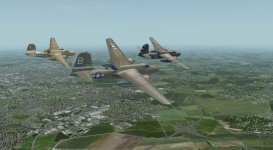 A-20Gs 2.jpg69.1 KB · Views: 2
A-20Gs 2.jpg69.1 KB · Views: 2 -
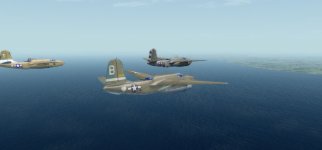 A-20Gs.jpg25.2 KB · Views: 0
A-20Gs.jpg25.2 KB · Views: 0 -
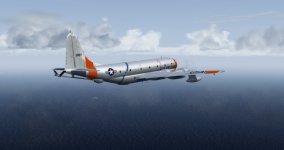 KC-97G, 19th ARS, Otis AFB to Thule AB, 1962.jpg34.1 KB · Views: 0
KC-97G, 19th ARS, Otis AFB to Thule AB, 1962.jpg34.1 KB · Views: 0 -
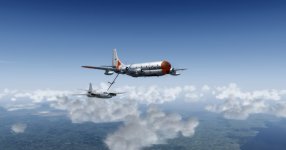 KC-97G, 19th ARS, Otis AFB to Thule AB, 1962 II.jpg30.8 KB · Views: 2
KC-97G, 19th ARS, Otis AFB to Thule AB, 1962 II.jpg30.8 KB · Views: 2 -
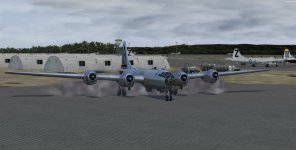 B-29A Jacks Hack, Isley Field, Saipan, 1945.jpg48 KB · Views: 2
B-29A Jacks Hack, Isley Field, Saipan, 1945.jpg48 KB · Views: 2 -
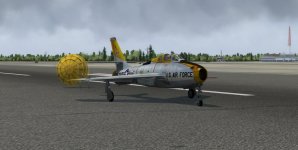 Republic F-84F-45-RE Thunderstreak - 52-6737, FS-737, 92nd TFS, 81st TFW, RAF Bentwaters, Englan.jpg54.5 KB · Views: 0
Republic F-84F-45-RE Thunderstreak - 52-6737, FS-737, 92nd TFS, 81st TFW, RAF Bentwaters, Englan.jpg54.5 KB · Views: 0
cavaricooper
SOH-CM-2023

California Dreamin... v4.1
Best- C























